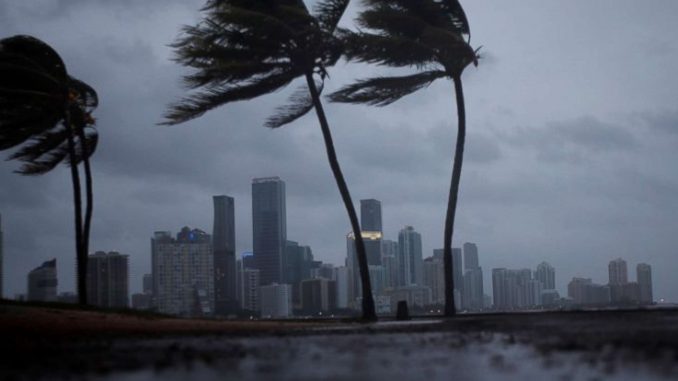
Hurricane Irma. Hurricane Harvey. Hurricane Maria. So many natural disasters in just a short amount of time that have devastated thousands of people, and it may be due to the ocean’s temperature increasing. Which leads to the question, are all these catastrophic hurricanes caused by climate change?
The Earth’s surface temperature has risen about 1.1 degrees Celsius since the late 19th century. Most of the warming occurred in the last 35 years. Due to the rising surface temperature, 2016 was the hottest year on record, and 16 out of 17 of the warmest years were recorded since 2001, according to NASA.
“It used to be really uncommon to have a Category 5 hurricane, but in the last couple of years we’ve seen more and more 4’s and 5’s,” said Megan Awe, an AP Environmental and Human Anatomy & Physiology teacher at Indian Trail High School & Academy. “And a lot of this is because of warmer temperatures which is supplying more energy, so it’s fueling these storms to get bigger and bigger. So there is actually a direct correlation to it.”
This increase in the Earth’s surface temperature is mostly caused by man-made emissions and an increase of carbon dioxide into the atmosphere. Unequal heating and cooling of the Earth’s surface cause much of the world’s winds. The winds could be altered by surface warming, affecting wind-driven coastal and marine currents. Maximum wind speeds could increase by 5 to 20 percent, according to the Pew Oceans Commission, an independent group of 18 American leaders that was established in April 2000 to conduct a national dialogue on the policies needed to restore and protect living marine resources in U.S. waters.
Data from NASA’s GRACE satellites show that the land ice sheets in both Antarctica and Greenland have been losing mass since 2002. Both ice sheets have seen an acceleration of ice mass loss since 2009, according to NASA.
Due to the rising surface temperature these ice sheets have been melting, which causes sea levels to rise. This can cause major flooding to islands and bring major damage along with it.
This also puts coral reefs at major risk. If the sea-level continues to rise, the coral reefs will not be able to receive the right amount of light to maintain the growth that they would normally get in shallower waters.
Christine Bedolla, a student at Indian Trail, is calling for action.
“It’s a very serious thing that’s happening, and I don’t understand why a lot of people are just ignoring it. It’s something that we really do need to start talking about, not only in class or on the news, but it’s something that we should probably start working to fix,” Bedolla said.
Kayla Smith, another student at Indian Trail, also shares concern regarding climate change.
“I think there is enough evidence in news and just based on what you see around you to ensure that climate change is real and it’s happening around us. I think we should start doing something about it, not only for our future but for the future of our kids,” Smith said.
Many people at Indian Trail believe that some action must be taken to prevent climate change in the future. Patrick Metzler, an AP & Honors Biology teacher at Indian Trail, said that people need to learn and understand more about climate change.
“Educate children. Educate the youth about climate change, that’s what I do,” Metzler said.

